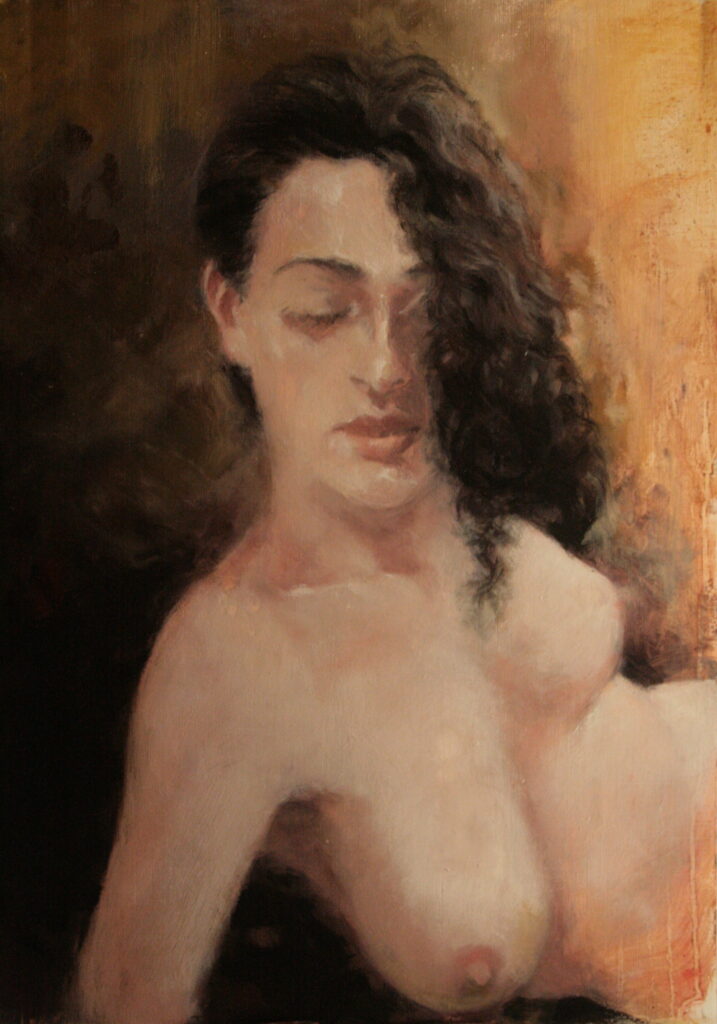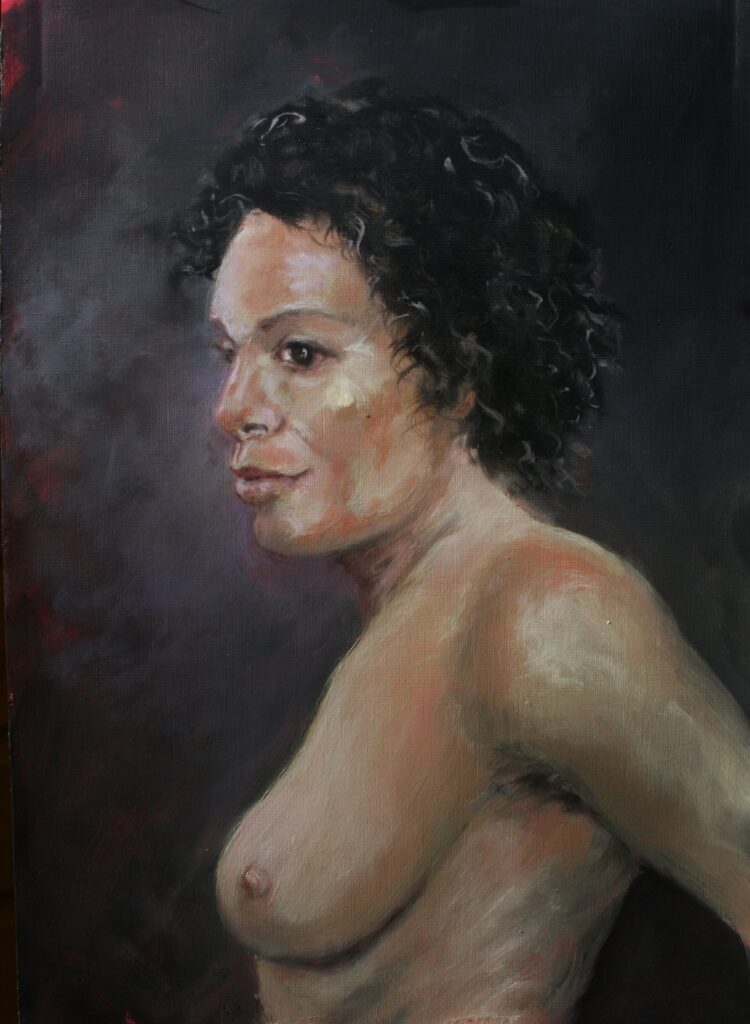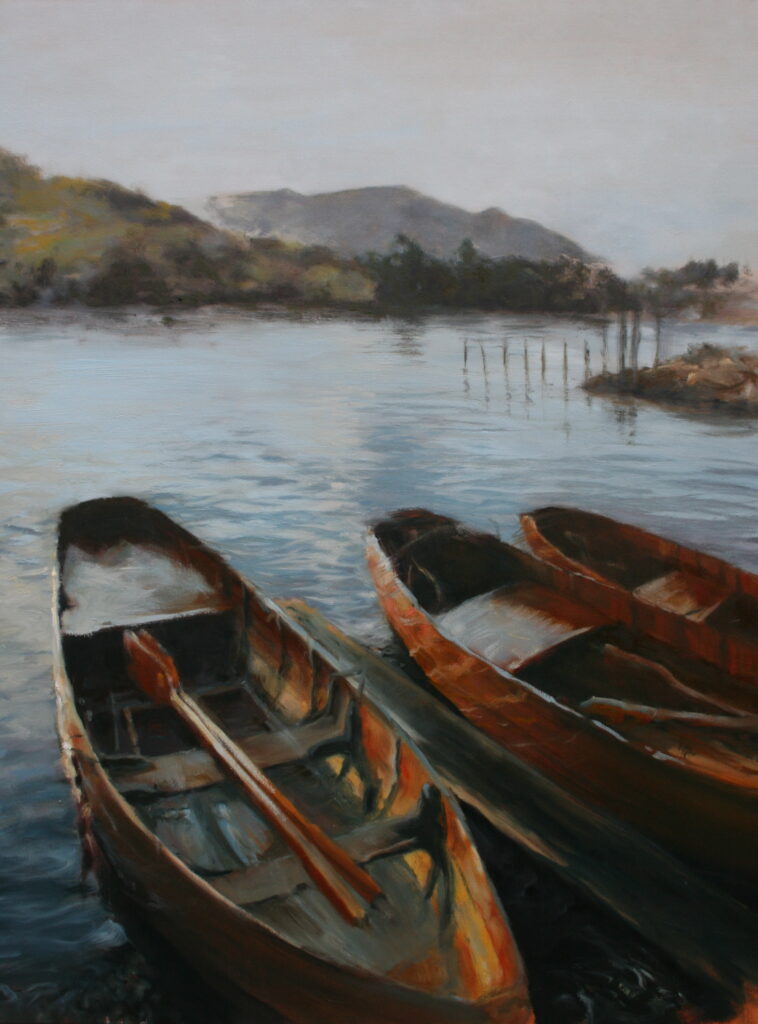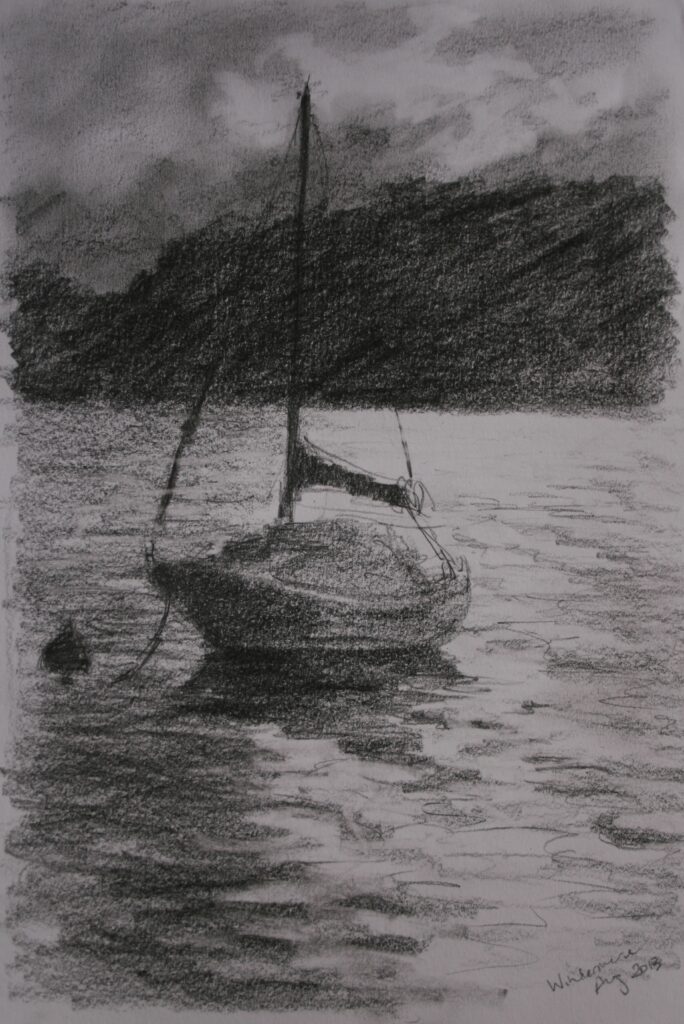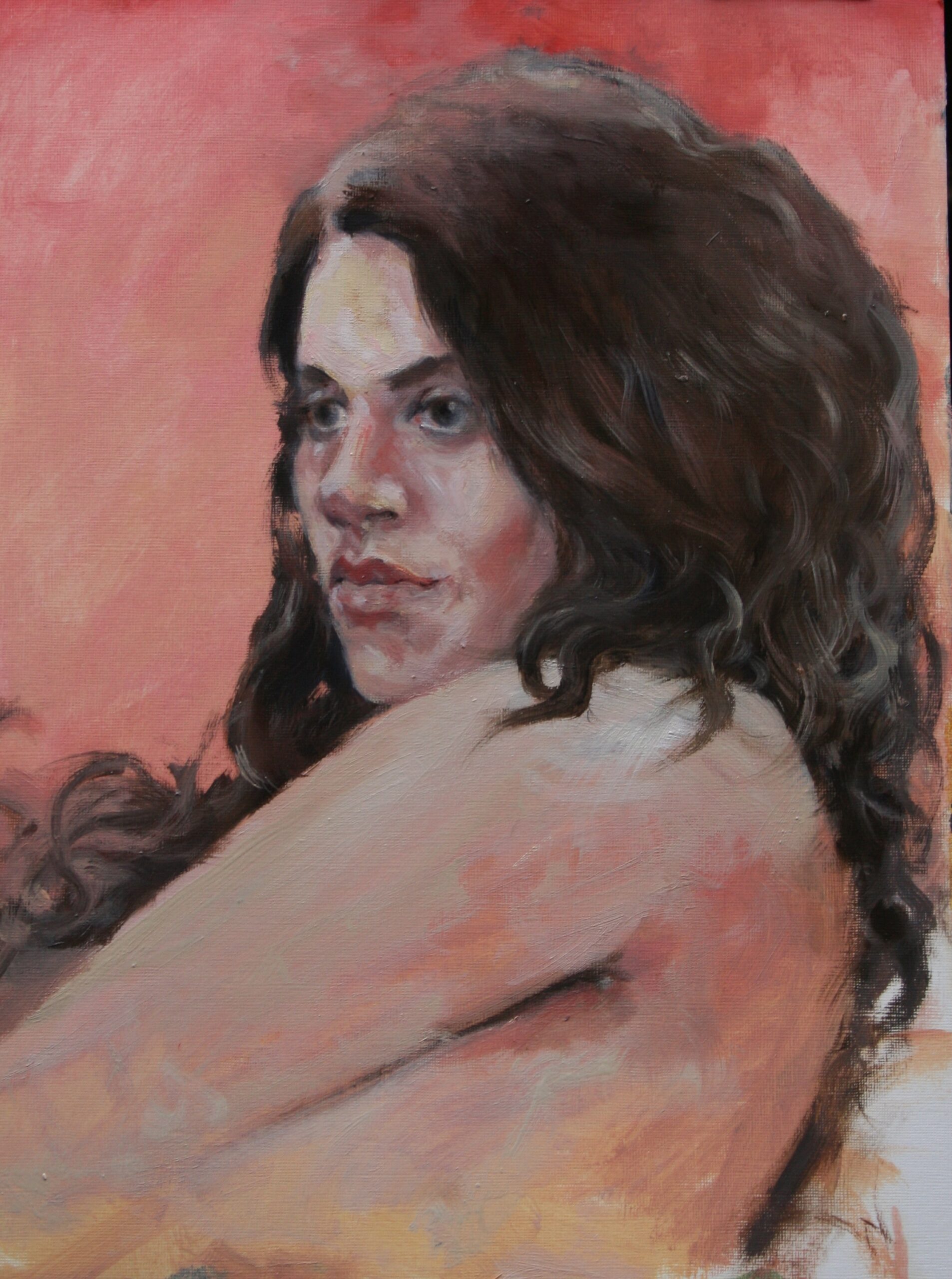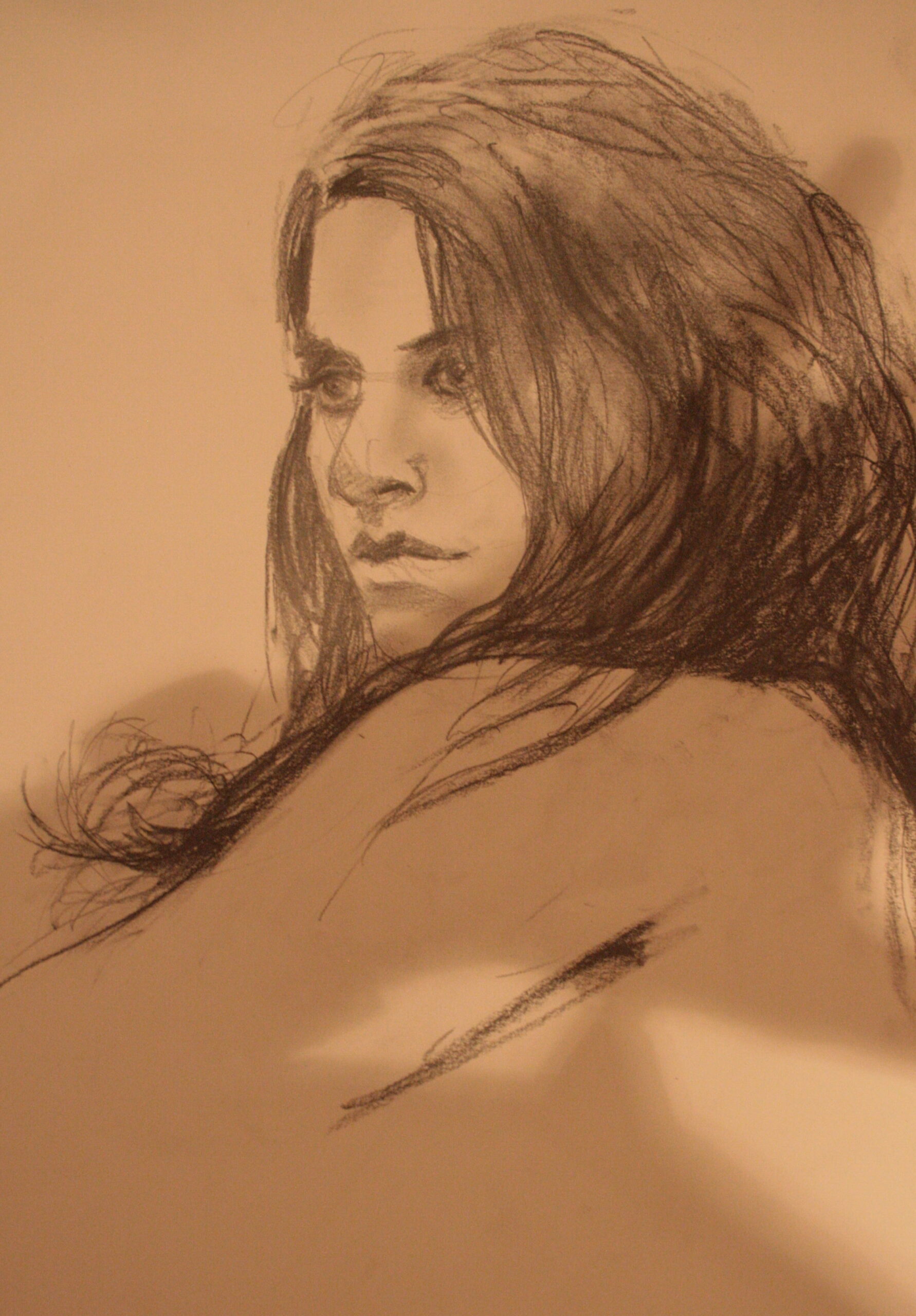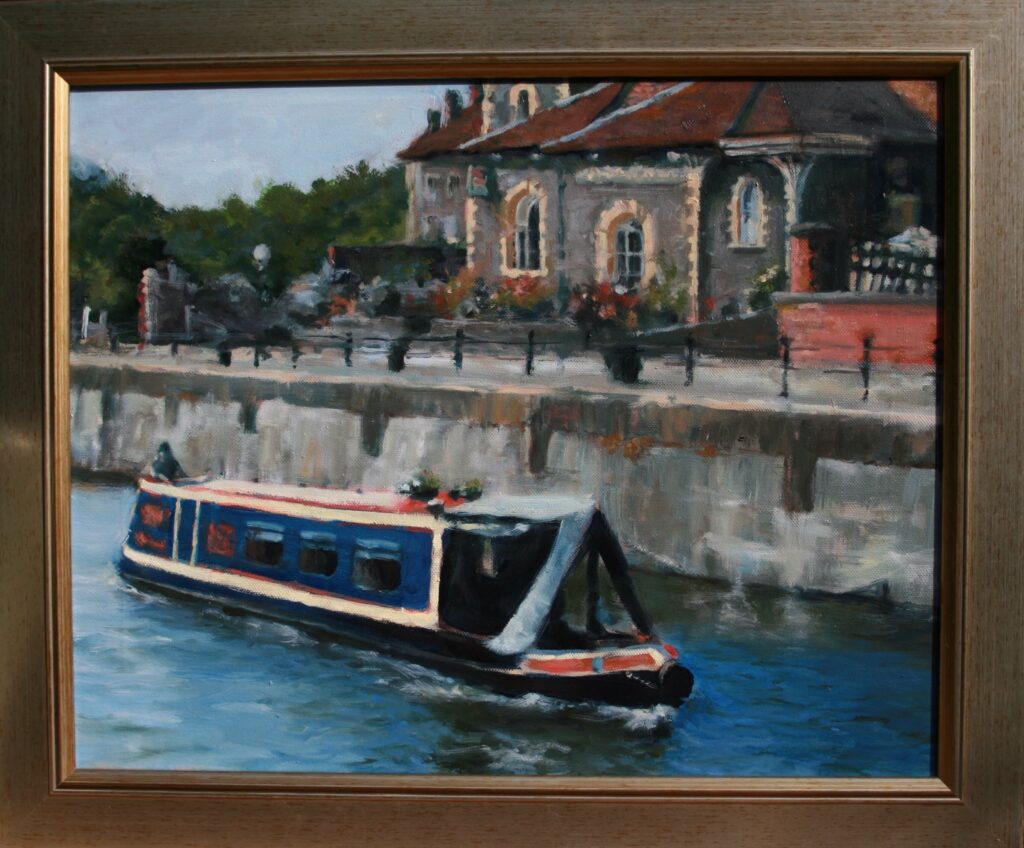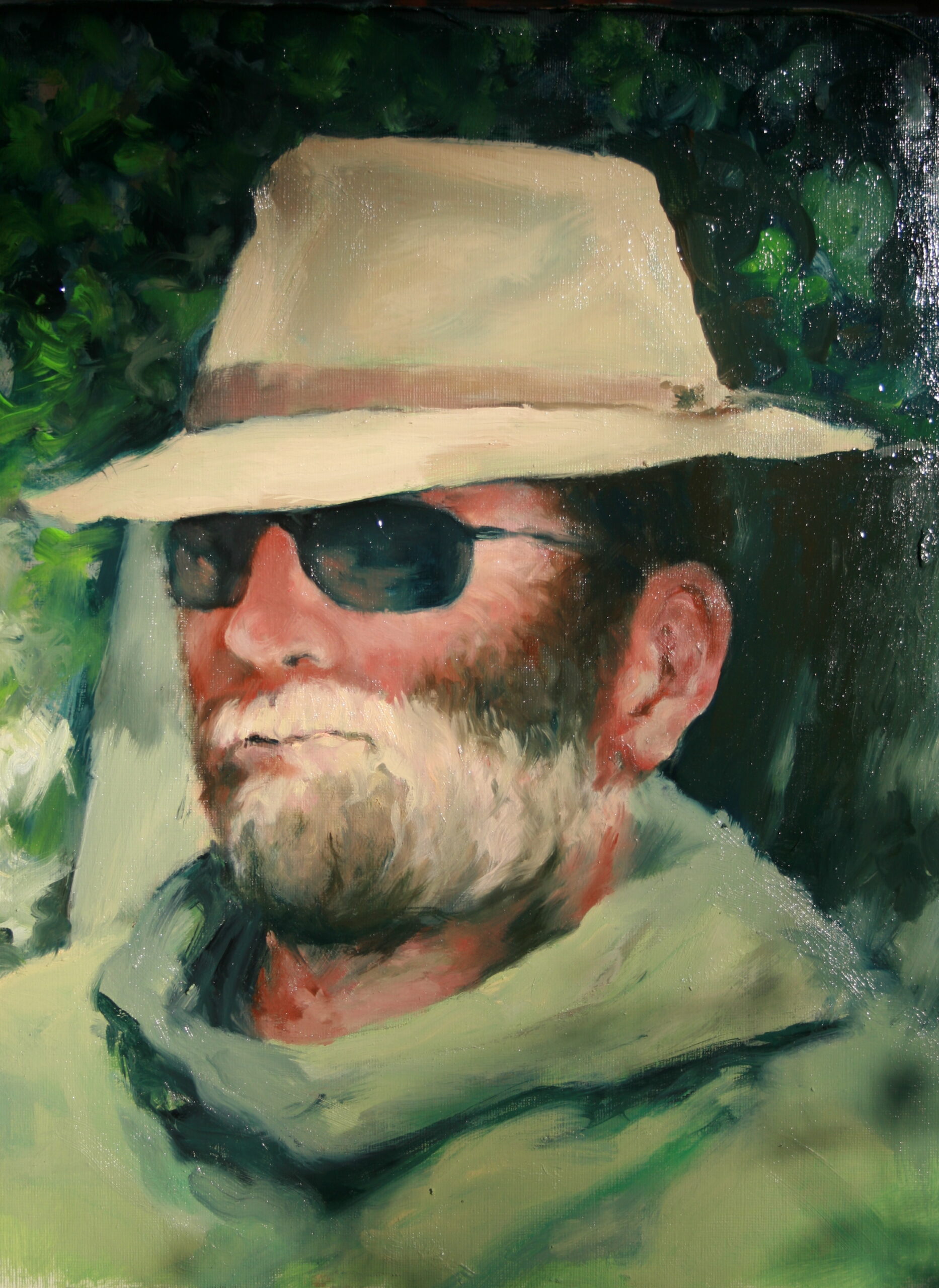Even if I make things difficult for myself, I persevere with the principle of working from life and from sketches; especially with a portrait.
Above is an oil painting of a model, Apryl… It is a hybrid derived from the two 5 and 15 min sketches of the model which appear below.
It is not easy to work essentially from drawings, true, but for flesh tones I have trusted to notes and a traditional palette, yellow ochre, crimson (cadmium red and cadmium red deep), ultramarine, ivory black and flake white. (Thanks to Harriet Dahan-Bouchard for guidance there).
